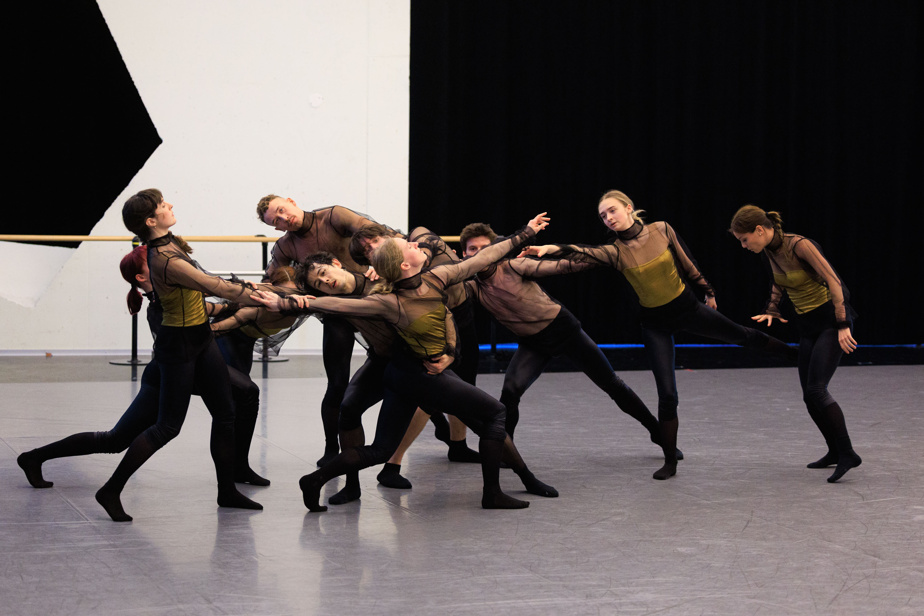“Over time, we always change as human beings, so it’s sure that our ideas, our inspirations will also change,” says Kristen Céré, choreographer of the play Désquilibré délectable, met in the studios of the Grands Ballets Canadiens. a few days before the premiere.
There is no link, no interaction between the pieces offered. But there is a common experience: choreographers started the creative process before the pandemic and had to interrupt work for a while. Inevitably, projects evolved during this period.
“Two years ago, I may have started with a particular idea, then it evolved,” explains Kristen Céré. I changed music, I changed some parts. I wanted to take another direction. For me, it is important to remain receptive to these changes. »
Originally from Montreal, the choreographer studied at the École Supérieure de Ballet before opening her wings and going to dance in Europe. For her, it is a return to Montreal. She teaches contemporary dance, but also yoga and dance adapted for the elderly or children with reduced mobility. She started choreography at a very young age.
“It’s about expressing myself, using the voice through my body, releasing emotions, telling something personal. »
For her, contemporary dance has a liberating, expressive side, which corresponds well to her personality.
Delectable imbalance goes well with Beguile, a choreography by Lesley Telford, an artist from British Columbia who also studied at the École supérieure de danse du Québec. She explores the need for interaction and the importance of empathy.
Australian choreographer Cass Mortimer Eipper has chosen a different path with Substrat, an energetic piece that depicts a dystopian world, but where a little tenderness slips in, for an excerpt from Georges Bizet’s Carmen.
“I wanted to create something that would intrigue and move people, that would help them think without being didactic. »
He tells how Ivan Cavallari, then artistic director of the West Australian Ballet, gave him the chance to taste choreography. Now artistic director of Les Grands Ballets, Mr. Cavallari offered him to create a piece for this company.
Cass Mortimer Eipper had some apprehensions. Classical dancers may have some difficulty adapting to the creative process in contemporary dance, a process that is not necessarily very linear. But this was not the case for the dancers of Les Grands Ballets.
Cass Mortimer Eipper himself has a background in classical ballet, but he quickly discovered an affinity with contemporary dance.
“Classical ballet tends to be a repertoire of aesthetically pleasing forms, and ways of transitioning from one form to another. For me, such a repertoire of forms does not exist for contemporary dance, it is rather an infinite exploration of the movements that can be created with the body. There are no limits. It’s a much bigger playing field. »
The fourth young choreographer in the program of Les Grands Ballets, the American Roddy Doble, is a lover of classical ballet. First dancer at the Grands Ballets, he is passionate about the great roles for men found in the repertoire, such as in Giselle, La Bayadère, Roméo et Juliette or Don Quichotte.
This is how the pas de deux he created, Crater, is more neo-classical than contemporary.
“As I’m still new to the world of choreography, I gave myself a reasonable task, set to magnificent music [the adagio from Johann Sebastian Bach’s Concerto in D minor after Alessandro Marcello],” he says. he. Since my play is only five minutes long, there is no story as such.
“I joke that at worst, if you don’t like the play, you can close your eyes and just listen to the music. »
However, that would be surprising. Two couples will present this pas de deux depending on the evening: Roddy Doble himself with Rachele Buriassi, then Mai Kono and Graeme Fuhrman.
